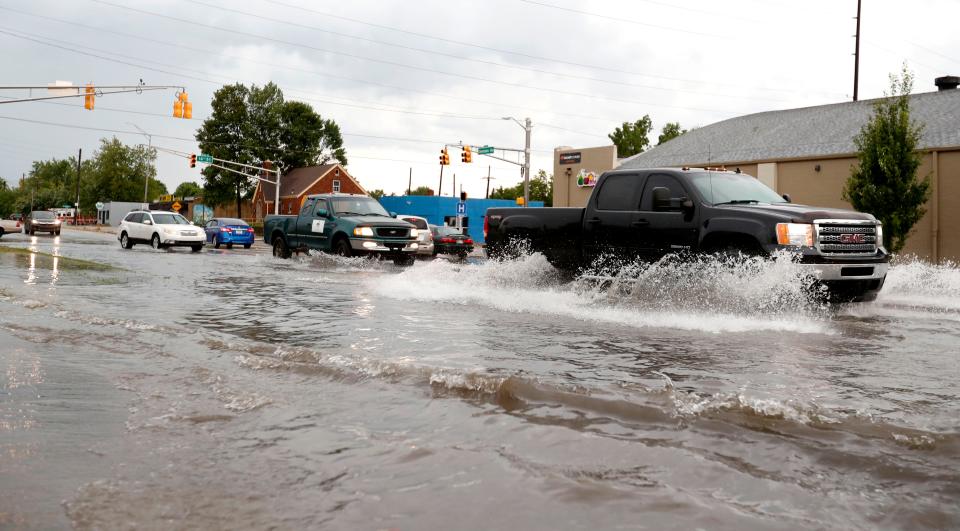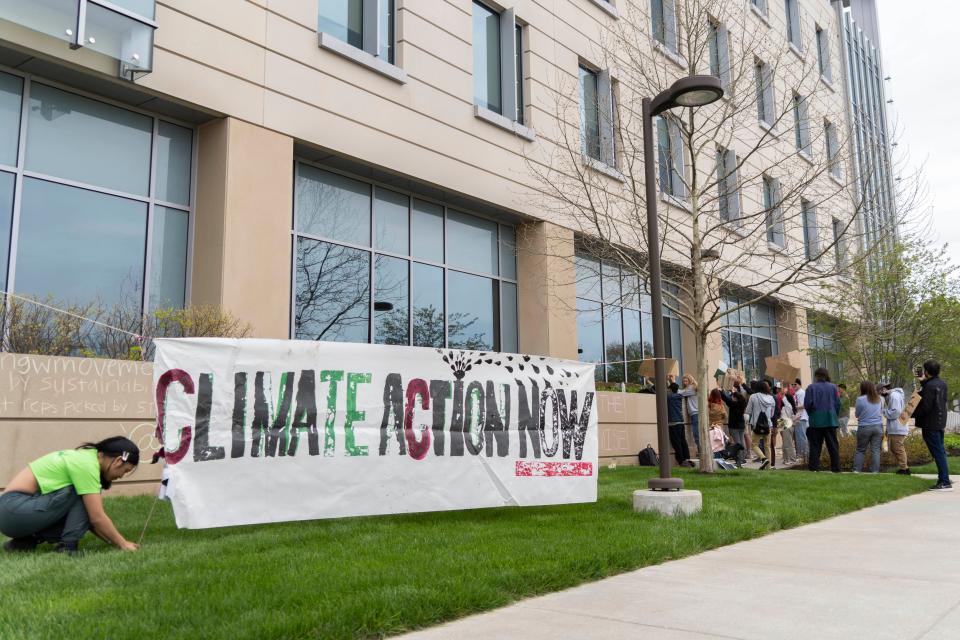Indianapolis among 'front-runner cities' in World Health Organization climate change project
Indianapolis in one of six "front-runner cities" from around the world being profiled for their plans on mitigating and adapting to climate change.
The World Health Organization worked with the city's Office of Sustainability and the county health department to put together a document detailing the hazards and risks Indy residents face, as well as what actions the city has taken to adapt to the changing climate.
The report also lists specific additional actions the city can take to further its resiliency to the effects of climate change.
In addition to Indianapolis, the project also created profiles for Accra, Ghana; Glasgow, Scotland; Kisumu, Kenya; Quito, Ecuador; and Washington, D.C.
“One thing in common with all cities, including Indianapolis, is they are front-runner cities in taking action addressing climate change,” said Tara Neville, a technical officer with WHO. “They recognize threats and develop adaptation and mitigation measures, like those laid out in Thrive Indianapolis.”
More on climate change initiatives: Indianapolis University students demonstrate during climate change meeting
What is the goal of the climate change project?
Neville, who led the project, said the organization works with governments trying to bring together public health and climate-change adaptation agendas. The goal is to develop and implement climate-action plans focused on the wellbeing of residents.

This pilot project is advancing that work by partnering with different municipalities at the city-level where important decisions are being made and actions are taken, she said.
Thrive Indianapolis is a community action plan under the city’s Office of Sustainability meant to address climate change’s challenges in Indy.
Indianapolis faces extreme precipitation and flooding as well as increasing temperatures and heatwaves, the WHO report says.
Extreme rainfall, which is expected to significantly rise by mid-century, can send billions of gallons of combined sewage and stormwater into local waterways, the report says. This can cause gastrointestinal diseases as well as more pediatric hospital visits.
How Indy residents are fighting: Indiana communities are looking up to trees to reduce the impact felt from climate change
Heatwaves and high heat days are also expected to increase as climate change progresses. Indy stands to see more than double the number of extreme heat days, those reaching above 95 degrees, by midcentury, the report says. Heat is a leading cause of weather-related fatalities.
Indy also stands to see an increase in the urban heat island effect, the report says, where areas with limited tree canopies and expansive paved surfaces can see temperature increases up to 15 degrees above mean temperatures.
Indianapolis has acted toward improving the outcomes of these hazards, however, and the WHO report notes the city’s commitment to being net-zero carbon by 2050 and creating the groundwork toward switching to 100% renewable energy use by 2028.
Who will pay for the project?
While Indianapolis has invested $320 million into its 20-year stormwater improvement program, the report sees current funding levels as inadequate.
Current funding is “not sufficient to adequately adapt to climate change,” the report says.
Morgan Mickelson, director of Indy’s Office of Sustainability, said that funding mark for infrastructure is a constantly moving target.
Scrub Hub: Is climate change making Indianapolis' pothole problems even worse?
There’s a time lag, Mickelson said, between when the city implements these adaptation measures and when it would see the full benefits.
“While engineers are trying to project these larger weather events, the standards we need to be holding are constantly moving,” she said.
The city has, however, made some progress on funding that the WHO report says is needed.
The Department of Public Works committed about $300 million for stormwater improvements, Citizens Energy Group’s DigIndy Tunnel System will help collect more stormwater for treatment and the city has brought back more robust street sweeping measures.

“That has a direct impact on water quality,” Mickelson said. “If the litter is not picked up it will get into our stormwater infrastructure and end up in our waterways.”
Lindsay Trameri, community engagement manager with the Office of Sustainability, said the city is now sweeping about 7,300 lane miles within the city’s Combined Sewer Overflow area. This helps keep the expected precipitation increases and flooding events less of a health risk.
“Street sweepers operate in that area so those roads are prioritized because they connect directly into waterways,” Trameri said.
The WHO’s urban profile is meant to be a snapshot of the immediate climate and health risks city’s face, Neville said — there’s a lot of crossover between public health and climate change.
IN youth leaders: Indiana students demand action on climate change. Lawmakers respond with hard 'no.'
“Adaptation like the infrastructure around water and sanitation services have important health implications by limiting waterborne diseases,” Neville said.
Most of the time, efforts to reduce the effects of climate change also benefit public health, Neville said, and it’s that intersection the report hopes to highlight and provide a structure for other cities to look to for their own planning.
“We need creative and innovative ways to solve climate change,” Neville said. “It extends beyond local communities and becomes a global community of cities and states and nations all working together and fighting together for a low-carbon, healthy future.”
Karl Schneider is an IndyStar environment reporter. You can reach him at karl.schneider@indystar.com. Follow him on Twitter @karlstartswithk
IndyStar's environmental reporting project is made possible through the generous support of the nonprofit Nina Mason Pulliam Charitable Trust.
This article originally appeared on Indianapolis Star: World Health Organization on Indianapolis climate change efforts

